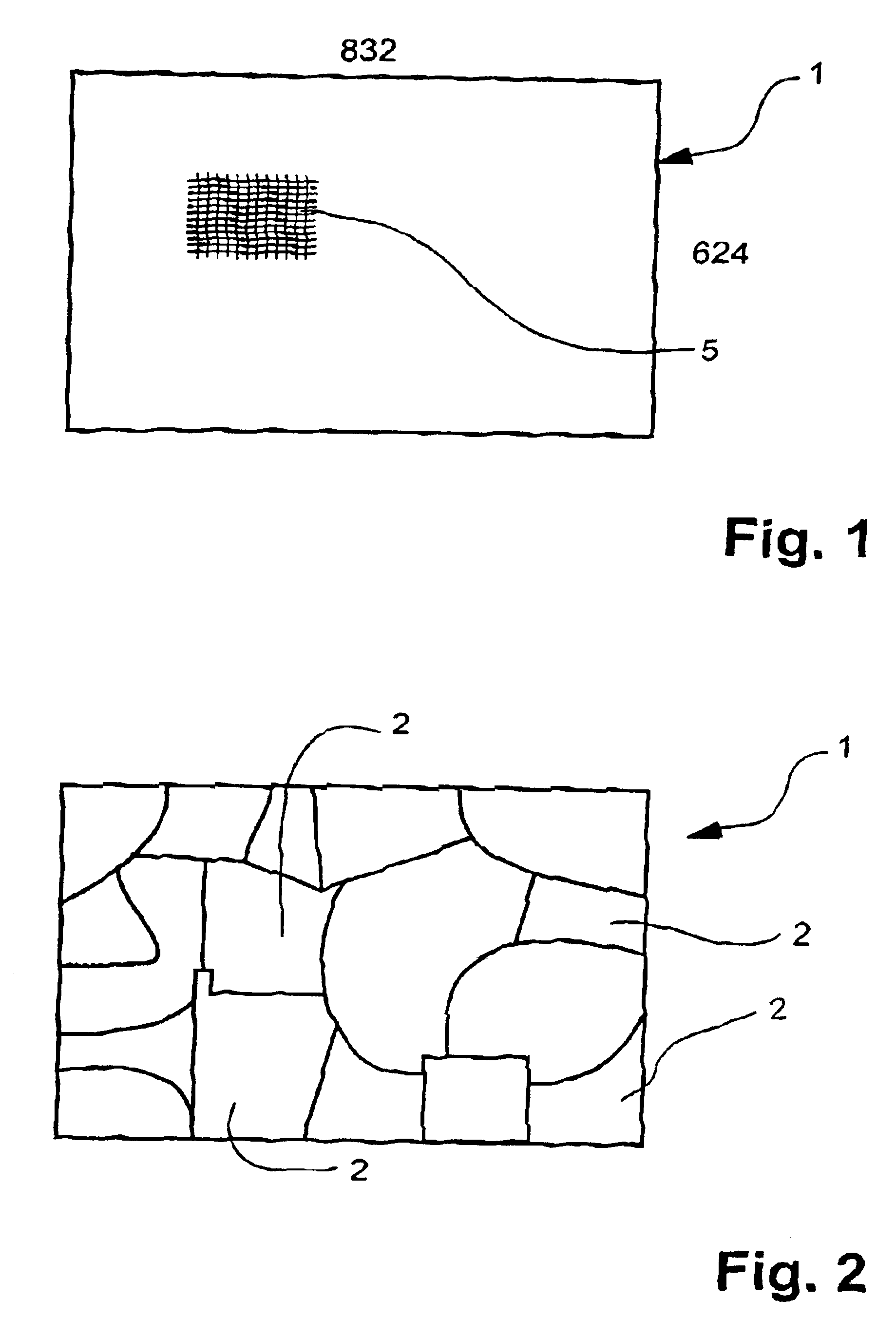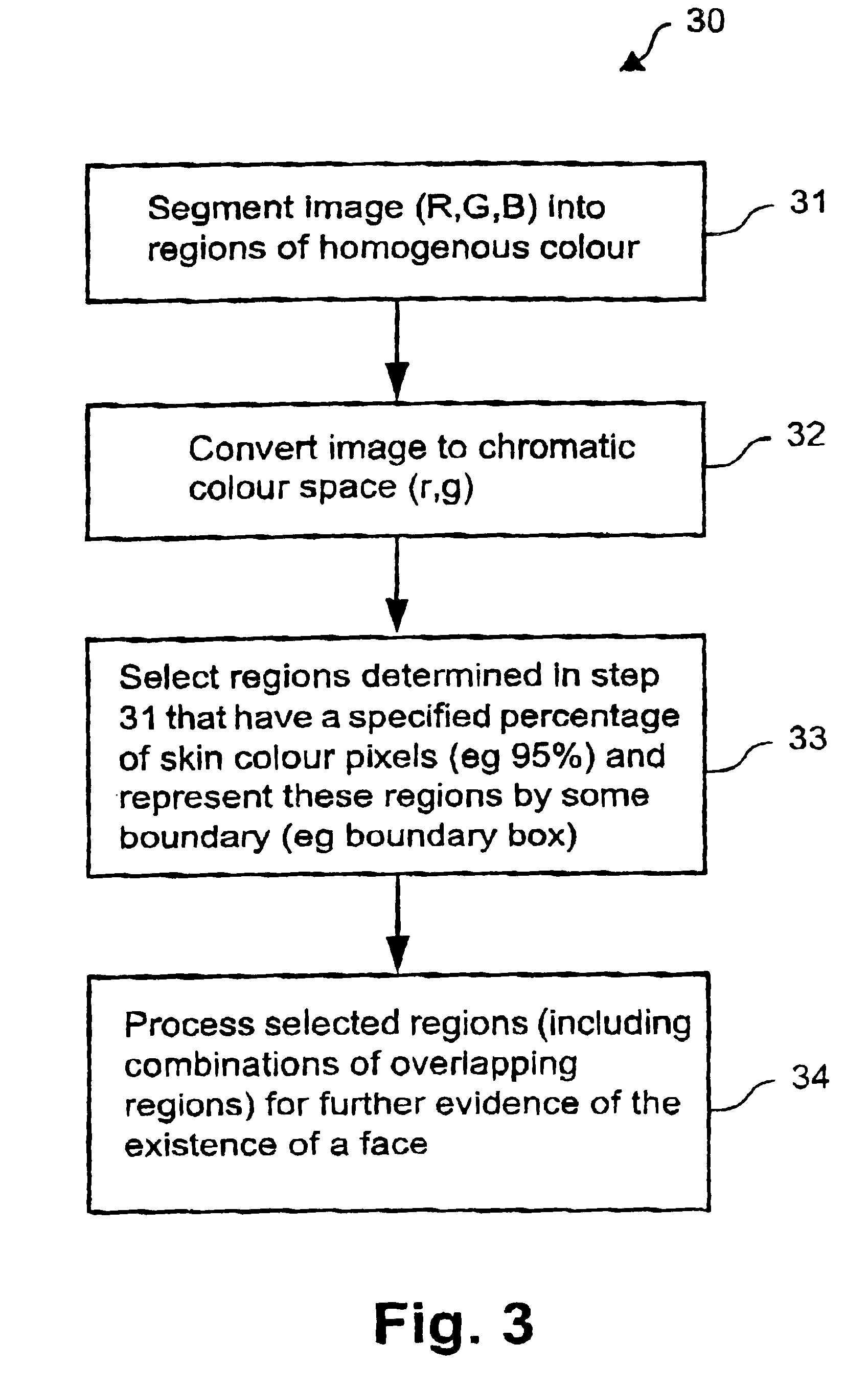Face detection in digital images
- Summary
- Abstract
- Description
- Claims
- Application Information
AI Technical Summary
Benefits of technology
Problems solved by technology
Method used
Image
Examples
first embodiment
[0039]According to the present invention, rather than consider the skin colour of the image on a pixel by pixel basis as described above in relation to the prior art of Yang and Waibel, the image 1 is segmented into a number of regions. An example of such segmentation is schematically illustrated in FIG. 2 on the segmentation basis that all the pixels in each region 2 have substantially the same colour. Alternatively the image may be segmented into arbitrary regions for processing.
[0040]The first embodiment implements a process 30 illustrated in the flow chart of FIG. 3, in which the regional segmentation of the image is carried out at step 31. Next, the regions of the image are converted in step 32 into the chromatic colour space (as descried above). The next step 33 is to select those of the regions determined in step 31 which have a specified percentage (typically in the range 90-95%) of pixels having a skin colour. These selected regions are then conveniently represented by a bo...
second embodiment
[0063]The processing 70 of an image is shown in FIG. 6. An input image is provided at step 72 and at step 74 the lighting conditions under which the image was captured are determined. Such a determination may be based on binary data obtained directly from the camera (eg. flash+indoors, no13flash+outdoors, no13flash+indoors, flash+outdoors) or corresponding meta-data provided with, or accompanying, the image, which may be encoded or otherwise communicated according to a predetermined format. Once the lighting conditions are determined, a corresponding or closest CDM is selected from a bank of look-up tables 78 retaining the CDM's (60a . . . 60n) previously determined. At step 80, a fire pixel of the input image 72 is selected and at step 82 is tested to see if th (GB or YUV) colour of the pixel is contained in the selected CDM (60a . . . 60n).
[0064]The steps shown in FIG. 6 following the comparison of step 82 depend upon the manner in which the CDM's are stored. In a preferred imple...
PUM
 Login to View More
Login to View More Abstract
Description
Claims
Application Information
 Login to View More
Login to View More - R&D
- Intellectual Property
- Life Sciences
- Materials
- Tech Scout
- Unparalleled Data Quality
- Higher Quality Content
- 60% Fewer Hallucinations
Browse by: Latest US Patents, China's latest patents, Technical Efficacy Thesaurus, Application Domain, Technology Topic, Popular Technical Reports.
© 2025 PatSnap. All rights reserved.Legal|Privacy policy|Modern Slavery Act Transparency Statement|Sitemap|About US| Contact US: help@patsnap.com



